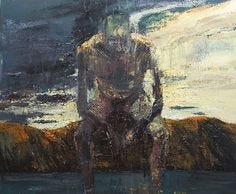How is Ecclesiastes actually structured?
Everyone who has preached or commented on the book has had to break the book into some outline or other. But most of these outlines are subjective and imposed rather than organic and discovered.
The best of the imposed answers, for me, is Lohfink's. Lohfink finds that Ecclesiastes both
adheres to the fivefold structure of Greek (Cynic) diatribe, and
has a chiastic shape.
Here's the Greek outline:
1:2–11 Opening (theses, questions, underlying cosmology)
1:12–3:15 Narrative introduction to the primarily anthropological central thesis
3:16–6:10 Deepening through many glimpses of social experience
6:11–9:6 Refutatio of contrary positions, especially of older wisdom
9:7–12:8 Applicatio through concrete proposals about human behavior
And here’s the Hebrew one:
1:2–3 Frame
1:4–11 Cosmology (poem)
1:12–3:15 Anthropology
3:16–4:16 Social critique I
4:17–5:6 Religious critique
5:7–6:10 Social critique II
6:11–9:6 Deconstruction
9:7–12:8 Ethic (concludes with poem)
12:8 Frame
While these outlines give an account for the resonance that Ecclesiastes has with both the Greek and Hebrew traditions, they don't exhaustively answer the question, But why did the author (editor) write (finish) it that way?
To answer that question, I think we need to give an account for at least these following curious features of the text:
The seven calls to joy. Qohelet calls his readers to “joy” at seven places: 2:24–26; 3:12–13; 3:22; 5:17–19; 8:15; 9:7–10. For some, like Rousseau, these calls to joy mark off seven sections, which are structured chiastically. While that would be nice, it doesn’t seem true. However, I don't think these seven calls are merely decorative. I'm still asking, Why seven calls?
Subjectivity and temporal experience. The grammatically unnecessary first personal pronoun, “I,” appears exactly 29x, as does the phrase “under the sun.” That's not an accident.
The third person intrusion at 7:27. The line is, “‘Behold, I have discovered this,’ says Qohelet.” This intrusion is curious for a few reasons. First, the name Qohelet appears 7x: 3x in the beginning and 3x at the end (1:1, 2, 12; 7:27; 12:8, 9, 10). Second, the first words of the book are div'rey qohelet, or “the words of Qohelet.” Third, the phrase amar qohelet, or “says Qohelet,” appears only in three places: 1:2; 7:27; 12:8. To put all this together, outside the opening and closing frames, the narrator intrudes one other time, referring to Qohelet in the third person.
Here’s what I think: Ecclesiastes is not a personal essay, but a narrative whose main character is Qohelet.
We have to remember, for example, that the man who began a book with the words, “Call me Ishmael,” actually preferred to be called Herman Melville, and that the views and experiences of the character, Ishmael, neither represent nor exhaust the views of his author.
By the way, does Ecclesiastes contradict itself? No. Qohelet does, because he’s both (a) a literary creation and (b) one who is on a journey.
Also, for a book that we already knew was steeped in existential questions, the observation that Qohelet is a character non-identical with the author raises even more questions about the nature of human experience and the limits of human knowing.
Okay, I have to get to work. I’ll keep reading Ecclesiastes, and I’ll tell you what else I see later. Please comment with your own observations or questions about Ecclesiastes.



